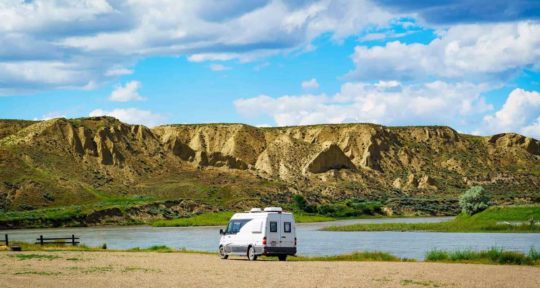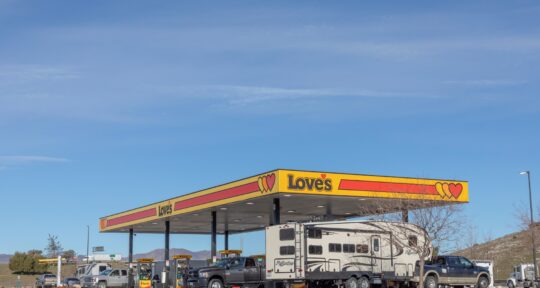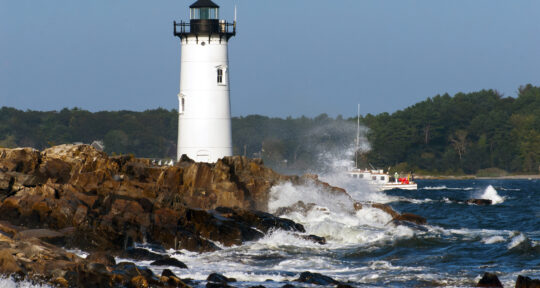Winter, as they say, is coming. But scarier than White Walkers is black ice—because it’s real and can be dangerous. While the risks of roadtripping during winter are real, so are the rewards as destinations are less likely to be crawling with tourists. Whether you’re headed to a snow-covered national park or ski area, let’s talk about how to best be prepared when tackling a winter road trip to mitigate the hazards to the best of our abilities.
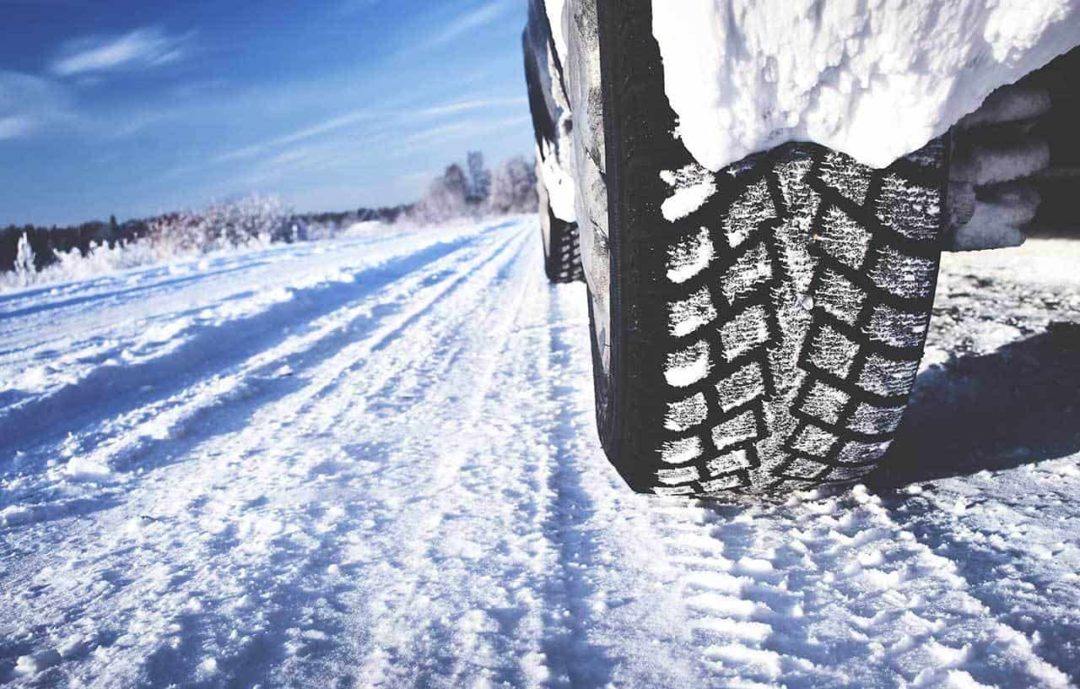
Before the trip
A lot of the most important things you can do to make a winter road trip safer happen days before you actually get on the road.
Weather reports and road closures
Nothing like being deep in the middle of nowhere only to find out that a pass is closed and you’re going to have to backtrack five hours in the dark. Google Maps generally keeps routes updated for hazards, but you can’t rely on that, especially in more remote areas. It doesn’t take long to do this research, and information about road closures is usually pretty easy to find.
Search “[state name] road conditions,” and you’ll find some good links. One site, IcyRoadSafety.com, has a lot of resources on a state-by-state level. Check those before you leave, and once you’re on the road dial 511 from time to time for even more up-to-date info about conditions.
Give your car a checkup
If you’re going to be putting down some serious miles in the cold, it’s a good idea to have your vehicle inspected by a professional—or at least someone who really knows what they’re doing. A full inspection is recommended, but here’s a quick checklist of things to pay extra close attention to:
- Make sure your heater is in good working order and that you have plenty of antifreeze in your radiator.
- Check all your lights and replace any that appear to be dim or dying.
- If your wiper blades are looking a bit ragged, don’t wait to replace them. You’ll thank yourself when the weather turns ugly.
- Make sure that you have wiper fluid rated to -40 degrees Fahrenheit (-40 C).
- Check the health of your battery.
- Consider getting an oil change, and if you do, ask for a winter-friendly oil (motor oils are rated by their viscosity levels at different temperatures) that still works with your specific engine. You may need to refer to your owner’s manual.
Get road trip ready: How to prepare your car for a road trip
Tires and chains
Tires get their own special section because for winter driving they really are that important. If your tires are showing signs of wear, losing tread, or generally looking shoddy, replace them now. This might seem obvious, but your tires are the only thing that connect your vehicle to the road, so they’re kind of critical. In fact, tests have shown that a good pair of snow tires is arguably more important than having four-wheel drive or all-wheel drive. If you’re going to be doing a lot of driving in tough winter conditions, dedicated snow tires may be a worthwhile investment.
Also extremely important: Get a set of chains for your tires. Chains used to be a real pain to put on, but technology moves forward, and now they attach very easily. They give you way more traction in snow and ice and are mandatory if you’re going to be dealing with steep roads in the mountains. Get them and keep them in your trunk all winter.
Add time to the plan
When you’re plotting your route, shorten the distance between destinations on a given day. If you would normally cover 400 miles, limit yourself to 300 instead. Not only are you going to have to drive slower than you normally would on a balmy summer’s day, but there are other things to contend with as well.
In winter, you have much less daylight to work with, and winter driving gets exponentially more treacherous at night. This is especially true if the weather was above freezing during the day. If it’s been warm enough for snow to melt, then—once the sun goes down and the temps drop—you’re likely going to be facing black ice (frozen roads with an essentially invisible layer of ice on top). That’s one of the most dangerous things you can encounter in a car, and you should avoid it at all costs. If that means your road trip takes 7 days instead of 6, and you have to shell out for an additional night in a hotel, do it.
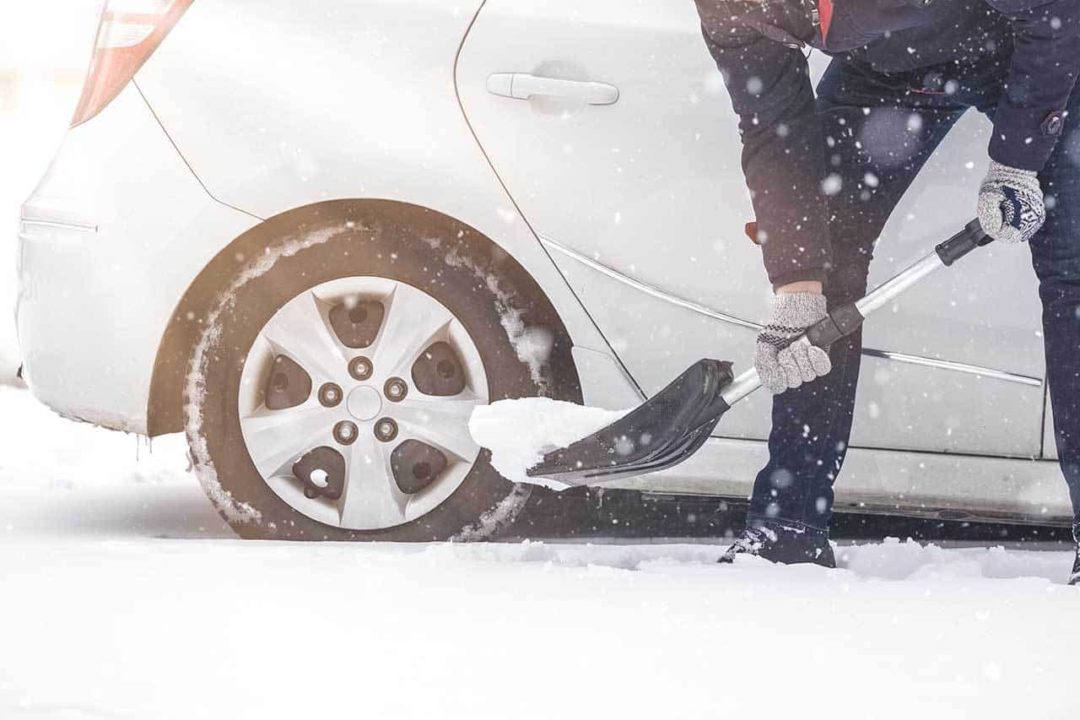
What to pack
In addition to packing all the stuff you want to have with you for your trip, reserve some space in your trunk for a fair amount of additional gear specific to winter road tripping. This is stuff you should leave in your car for the duration of your journey.
Road trip essentials: How and what to pack for your road trip
Extra warm clothes. Got an old, heavy winter jacket that’s too ugly to wear in public? Keep it in the trunk. Heavy winter gloves are extremely important, too, since you may be working with your hands, and I’d add a rain poncho to the package as well.
Cold weather blankets. Hopefully, you won’t have to spend the night in your car, but if you do, you’ll be very happy you had these.
Flashlights. Have at least two in your car, and do yourself a favor: Make sure one of them is a headlamp.
Food and water. If you happen to get stuck in the snow, you may well need some calories. Look for non-perishable items that also won’t freeze into a brick. Since water most certainly will freeze into a brick, keep spare bottles inside the car instead of in the trunk.
Ice scraper. Even if everything goes perfectly according to plan, you’ll very likely need this. Get one with a brush on the back to help clear snow off your hood and your lights.
Road flares. If you end up with a dead car on the side of the road in the middle of a blizzard, you want your car to be as visible as possible, so a driver (or a snow plow) doesn’t obliterate it. Road flares are very bright—use ‘em.
Shovel. You might need to dig your way out of a little situation. You can find foldable shovels that will do the job without dominating your whole trunk.
Jumper cables. In case you need a jump.
Tow rope. In case you need a tow.
First aid kit. If you have an accident in bad weather, it may be some time before help can get to you. Best to be able to patch up small cuts and stuff while you wait.
Car charger and portable USB power pack. You likely already have some way to charge your phone in your car. If you don’t, get one. Additionally, carry a portable USB power pack to charge your phone and other gadgets even if your car’s electrical system goes out.
Spare batteries. For anything that takes batteries (flashlights, your car’s key fob, etc.).
Matches and camping stove. Make sure your matches are stormproof and can light even when wet and in howling winds. For the stove, have a cheap, one-burner setup that just screws onto a small propane bottle. Hopefully, you won’t need this, but if you need to melt snow to make water or heat some water to stave off hypothermia, you’ll be happy you had it. Important note: Make sure you have adequate airflow in your car (crack at least two windows) before igniting your stove.
Cat litter. You may be able to get yourself out of a slippery situation by pouring some kitty litter under your tires to give yourself more traction. You’ll probably be way better off with the aforementioned snow chains, though.
Multitool. In addition to the tools you hopefully have for maintaining your car (a cheap socket set, a jack, a tire iron, etc.), it’s good to have a multitool for working on smaller things. It can be helpful for cooking, repairs, and even medical work.
Extra wiper fluid. Again, of the type that’s rated to -40 degrees F/C.
Hot packs. You may be really happy that you had a small box of chemical hand warmers. Once you can’t feel your fingers, it becomes significantly more difficult to do things that ensure your survival. If you’ve got the space in your trunk, it couldn’t hurt to have these.
Road trip tips: How to prepare for the road with snacks, apps, and entertainment
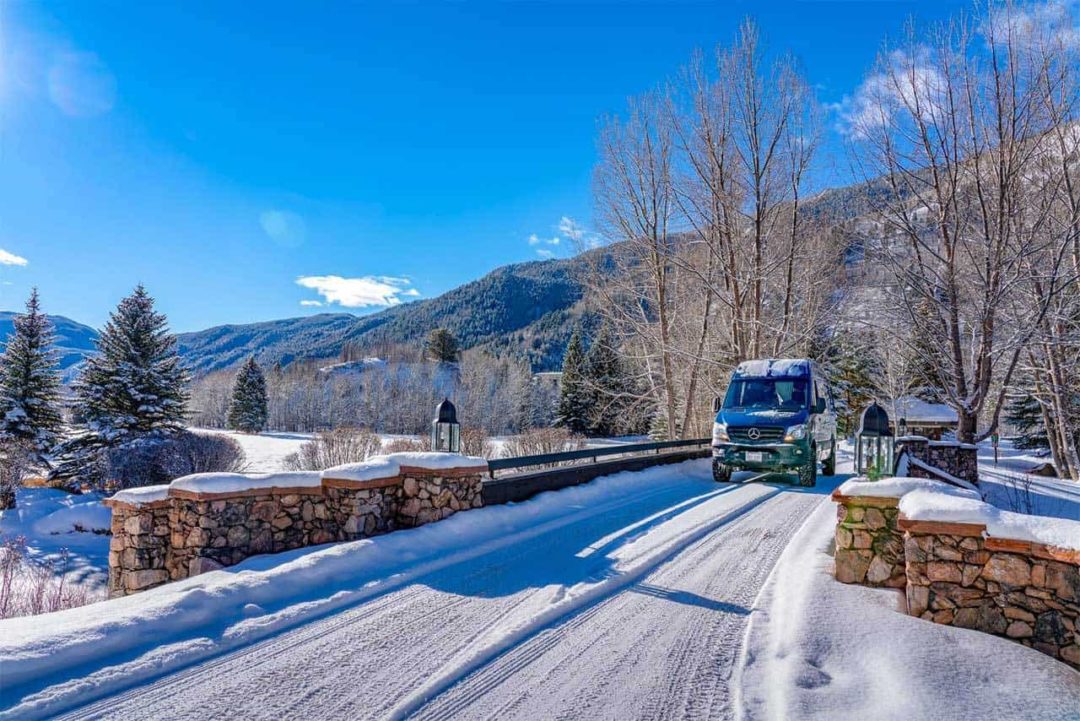
While on the road
Slow down
Ice, snow, and rain all extend the distance it takes you to come to a full and complete stop. The best way to get some of that (potentially life-saving) distance back is to slow down. Go slower than you want to.
Know how to stop (your specific vehicle)
If your vehicle has an anti-lock braking system (ABS), that’s good. You can firmly apply your foot to the brake and hold it down, and the ABS will do everything it can to keep you from skidding out. If you don’t have ABS, you’re going to have to pump your brakes on and off to keep your wheels from sliding out. Obviously, this is much more prone to human error. Practice the technique in a big, flat, empty, snow-covered parking lot so you can get the feel for it. There are plenty of videos on YouTube that demonstrate the technique.
Half-full is the new empty
Waiting until your fuel light comes on before heading to a gas station is a bad idea for several reasons, even in warm conditions. In winter, you don’t want to risk it because if you get stuck, you may need to keep your engine running to keep you warm until help arrives. For this reason (and because an open gas station may be harder to find in a storm), when your tank is down to half, seek a refill. You’ll have to stop more often (another reason to add more time to the plan), but you’ll be better covered in an emergency.
When to turn off traction control
Traction control systems can be great when you’re driving down the road. When you’re starting from a standstill, or if you’re a bit buried, it can actually work against you. If you’re struggling to get started, try turning it off, and putting down some kitty litter in front of and behind your tires.
Keep your lights clean
Seeing and being seen are mission-critical. Every time you stop, clear your lights of any snow or mud that has accumulated. Not just your headlights but your tail and brake lights, too. Even if you don’t have to stop for any other reason, it’s smart to pull off the road to do this every hour or so, or more often if you notice your lights are getting dimmer.
Watch out on bridges and overpasses
These features have surfaces that are far more prone to collecting water and freezing. Some of them are even exposed metal. Go way slower than you normally would.
No cruising
Keep cruise control turned off. In adverse conditions, it can make you hydroplane or spin out if your car hits a big puddle or a patch of ice.
If you do get stuck…
If you get stuck, try to get your vehicle to the side of the road and then stay with your vehicle. You have a far better chance of surviving if you remain with your mobile shelter there. Get out your flares and put them around your vehicle, starting dozens of yards back, if possible, to give drivers more time to react. This also helps to signal that you’re in trouble.
Put on those extra warm layers, keep your flashers going, and call for help if you have cell service. You’ll want to start the car (if it’s able) and let it run here and there so you can keep using the heater. If you do that, make sure you dig out the tailpipe. You’ll also want to pull the rest of your emergency supplies out of the trunk and into your car. Grab them all early, so you don’t have to make more trips later. Other than that, just try to stay calm. Remind yourself this is why you prepared.
Don’t drive drunk
This is a no-brainer, but please, please, please don’t drive when intoxicated. Winter conditions are very demanding, and you need your wits about you and your reflexes at their best. There are a lot of holiday parties this time of year, and even if you aren’t attending them, others will be. Look out for other intoxicated drivers on the road. Stay sharp.
There are certainly other things you can do and items you can add (like a two-way satellite communicator, for example) to mitigate risk and do your own homework before undertaking any large, cold-weather journeys. Hopefully, these basic tips, though, will get you safely to your destination.


